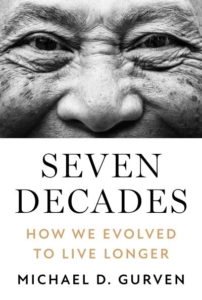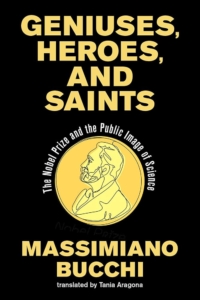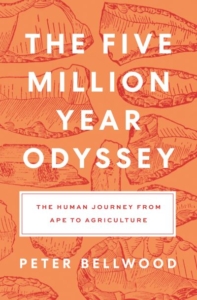“Seven Decades: How We Evolved to Live Longer” with Professor Michael Gurven
Our ability to live for many decades is often viewed as a modern luxury made possible by clean water, improved living conditions, and advances in medicine. Yet, human longevity is actually part of our deep evolutionary history. The long-standing belief that life in the past was “nasty, brutish, and short” is a widespread misconception—one rooted in misleading averages and often repeated in textbooks and popular media.
In his book “Seven Decades: How We Evolved to Live Longer”, anthropologist Professor Michael Gurven challenges this myth. Drawing on extensive fieldwork, he presents compelling evidence that the capacity for long life first emerged among our hunting and gathering ancestors and argues that the human body is fundamentally designed to function for roughly seven decades. Combining vivid storytelling with rigorous science, Gurven shares insights from years of research among Indigenous societies whose diets and traditional ways of living more closely resemble how humans lived before industrialization. These communities, he shows, experience far lower rates of chronic diseases of aging—such as heart disease, dementia, and diabetes—than populations in industrialized nations.
In this episode of Bridging the Gaps, I speak with Professor Michael Gurven, Distinguished Professor of Anthropology at the University of California, Santa Barbara. For more than twenty years, he has worked closely with Indigenous groups in South America to better understand how traditional lifestyles can shed light on the evolution of human behavior, health, and psychology. His research uses an evolutionary framework to help explain modern health challenges and the origins of chronic diseases.
Our conversation offers a detailed exploration of the book and the science behind it. We begin by examining the myth that ancient people rarely reached old age, discussing how misleading averages have shaped this false narrative and why it is important to correct it. We then talk about a central idea in the book: that each stage of human life has an evolutionary purpose, and our bodies and minds have been shaped accordingly.
Another major theme is the evolutionary significance of post-reproductive life. While some biologists have argued that life after reproduction has no adaptive function, Gurven’s work shows that midlife and elderhood evolved for meaningful reasons and contribute to group survival.
At this point, the discussion turns to his fieldwork—what it is like to work with Indigenous communities, the unique challenges of this research, and how these challenges are addressed in study design and implementation. We then explore key findings from his work, including results that challenge assumptions in modern medicine. Gurven explains what these insights can teach us about improving healthcare and rethinking aging in contemporary societies.
Finally, we discuss the book’s broader message: that by understanding our evolutionary past, we can gain powerful new perspectives on aging, health, and what it means to live a long, meaningful, and productive life.
This conversation is wide-ranging, thorough, and deeply informative.
Complement this discussion with “The Human Journey From Ape to Agriculture” with Professor Peter Bellwood and then listen to The Evolution of Knowledge and Rethinking Science for The Anthropocene with Professor Jürgen Renn.




Connect With Us